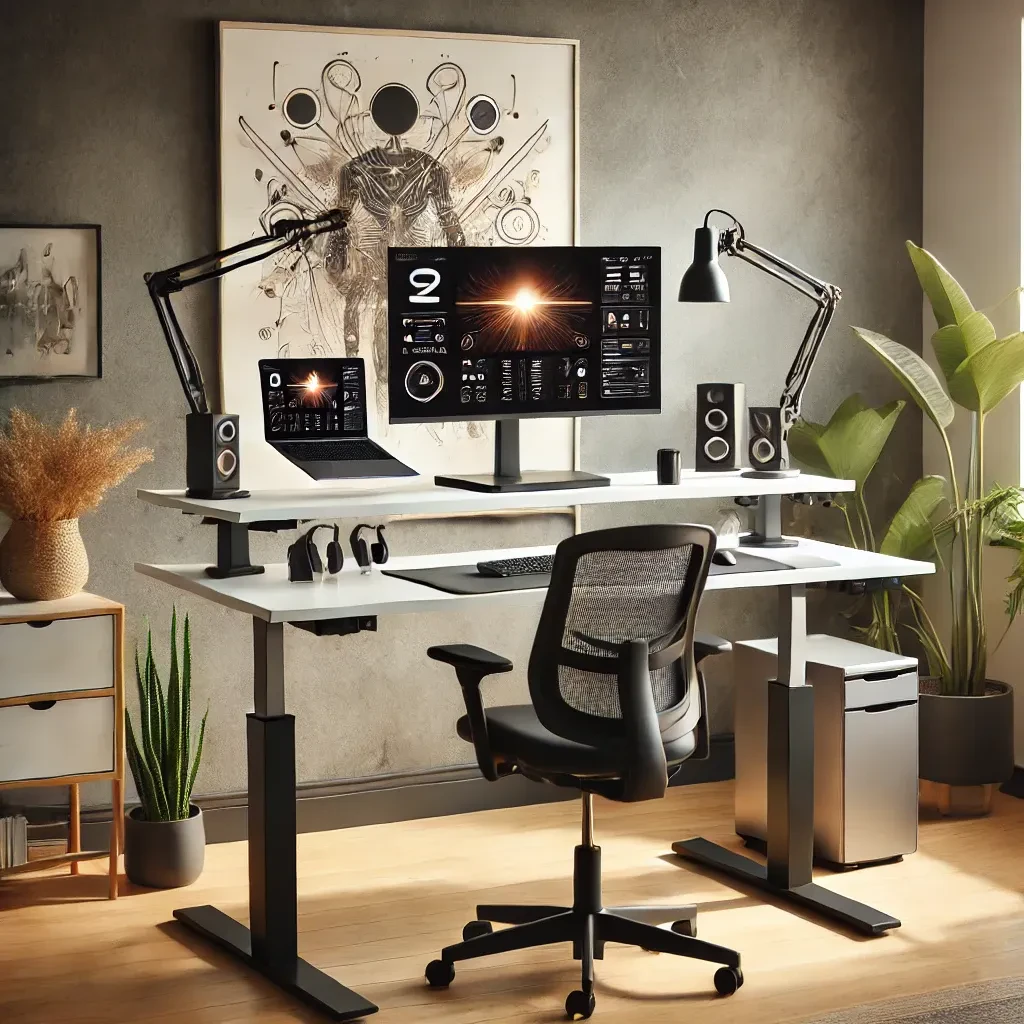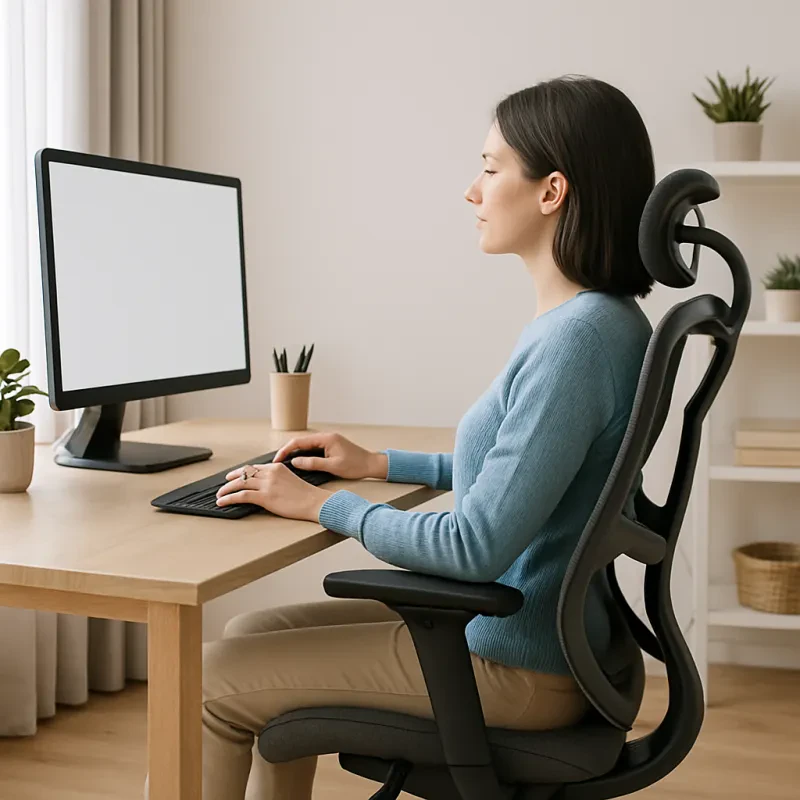The Benefits of Using a Standing Desk: Why You Should Make the Switch
In recent years, standing desks have become a popular alternative to traditional seated workstations. Whether in home offices, corporate environments, or even gaming setups, people are embracing the idea of spending more time on their feet while working. But is a standing desk really worth the investment?
In this article, we’ll explore the numerous benefits of using a standing desk, from improved health and productivity to long-term ergonomic advantages. If you're considering making the switch, this guide will help you understand why it could be one of the best changes for your workspace.
1. Improved Posture and Reduced Back Pain
One of the most immediate benefits of using a standing desk is better posture. Sitting for extended periods often leads to slouching, rounded shoulders, and pressure on the lower back. Over time, this poor posture can result in chronic pain and discomfort.
Standing desks encourage a more natural alignment of the spine. When set up correctly—at elbow height with screens positioned at eye level—they help keep your back straight and shoulders relaxed. Many users report significant reductions in back and neck pain after transitioning to a standing desk, making it an excellent choice for those who suffer from discomfort related to prolonged sitting.
Tip:
Pair your standing desk with an anti-fatigue mat to reduce strain on your legs and lower back while standing.
2. Increased Energy and Reduced Fatigue
Ever feel sluggish after sitting at your desk for hours? That’s because long periods of sitting reduce circulation and energy levels. When you stand, your body remains engaged, blood flow improves, and oxygen reaches your muscles more efficiently. This results in higher energy levels throughout the day and a noticeable reduction in fatigue.
Many standing desk users experience fewer afternoon slumps, making it easier to stay focused and productive. This boost in energy can also lead to improved mood and a greater sense of well-being at work.
3. Lower Risk of Chronic Diseases
Prolonged sitting has been linked to an increased risk of serious health conditions such as heart disease, type 2 diabetes, and obesity. Studies suggest that excessive sitting slows metabolism, reduces insulin sensitivity, and contributes to weight gain.
Standing desks promote movement and encourage users to shift positions, which helps combat these risks. While standing alone isn’t a complete replacement for exercise, it can contribute to an overall more active lifestyle, reducing the likelihood of developing chronic diseases.
Tip:
Incorporate small movements throughout the day, such as stretching or shifting weight from one foot to the other, to maximize the health benefits of standing.
4. Boosted Productivity and Focus
Standing desks aren’t just good for your health—they can also make you more productive. Research suggests that standing while working can lead to improved focus, faster task completion, and better decision-making.
When you stand, your body remains more alert, which can help you stay engaged in tasks and minimize distractions. This is particularly beneficial for professionals who need to maintain high levels of concentration throughout the workday.
Additionally, many standing desk users report feeling more motivated and less prone to procrastination. By keeping your body active, your mind stays sharp, making it easier to power through your to-do list.
5. Potential Weight Management Benefits
One of the lesser-known advantages of standing desks is their potential to aid in weight management. While standing doesn’t burn a significant number of calories compared to exercise, it does burn more than sitting. On average, standing burns about 50 more calories per hour than sitting.
Over time, this small difference can add up. By incorporating standing and light movement into your work routine, you can contribute to a healthier metabolism and help prevent weight gain associated with prolonged sedentary behavior.
6. Reduced Risk of Musculoskeletal Disorders
Many office workers suffer from musculoskeletal disorders (MSDs) caused by repetitive strain and poor ergonomics. Common issues include wrist pain, carpal tunnel syndrome, and shoulder tension, often resulting from improper desk setups.
A well-configured standing desk can alleviate these problems by allowing you to adjust your workstation to a more natural and comfortable position. Height-adjustable desks, in particular, offer flexibility, allowing users to switch between sitting and standing throughout the day to prevent strain on muscles and joints.
Tip:
Use a keyboard tray and an adjustable monitor stand to ensure that your arms and neck remain in a neutral position while working at a standing desk.
7. Greater Collaboration and Engagement
In office environments, standing desks can enhance teamwork and collaboration. In workplaces where standing desks are common, employees are more likely to engage in spontaneous discussions, brainstorming sessions, and quick problem-solving interactions.
Additionally, standing desks are frequently used in open office layouts and agile workspaces where movement and flexibility are encouraged. By standing rather than sitting in isolated cubicles, employees can foster a more dynamic and interactive work environment.
8. Customizable to Fit Any Work Style
Another advantage of standing desks is their versatility. Many modern standing desks are height-adjustable, allowing users to alternate between sitting and standing throughout the day. This flexibility accommodates different work styles, ensuring that individuals can find the most comfortable and productive setup for their needs.
Some standing desks even come with additional features like built-in charging ports, cable management systems, and programmable height settings, making them a practical and stylish addition to any workspace.
9. Encourages Movement and Better Circulation
A key aspect of a healthy work environment is movement. Standing desks encourage users to shift positions, stretch, and walk around periodically, which helps improve circulation and prevent stiffness.
Sitting for too long can cause blood to pool in the legs, increasing the risk of varicose veins and circulation-related issues. Standing desks naturally counteract this by keeping the body more active and engaged throughout the day.
10. Enhances Mental Well-Being
Beyond physical health, standing desks can also have a positive impact on mental well-being. Many users report feeling less stressed and more engaged when using a standing desk. The increase in movement and circulation contributes to the release of endorphins, which help boost mood and reduce stress levels.
Standing while working can also promote a sense of control over one’s work environment, leading to greater job satisfaction and overall happiness.
Final Thoughts: Is a Standing Desk Right for You?
If you spend long hours at a desk, investing in a standing desk could be one of the best decisions you make for your health, productivity, and overall well-being. The ability to alternate between sitting and standing, improve posture, boost energy, and reduce health risks makes it a valuable addition to any workspace.
To get the most out of a standing desk, remember to adjust it to the correct height, incorporate movement throughout the day, and listen to your body’s cues. Standing desks are not a cure-all, but when used correctly, they can significantly enhance both your work experience and long-term health.
Are you ready to take your workspace to the next level? Consider switching to a standing desk and experience the benefits for yourself.



